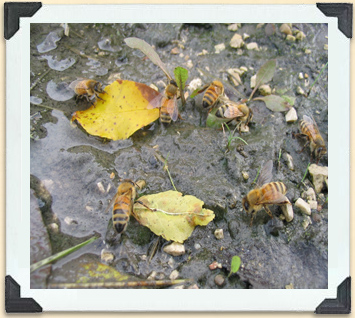The Keeper

Beekeepers often position their bee yards close to a natural source of water.
© University of Manitoba
Placement
Beekeepers protect their colonies by setting the hives in a suitable location. Ideally, beehives should be placed in front of a windbreak that shields them from prevailing winds, and on dry land. The entrance to the hive should be facing southeast for morning sun exposure. Bees should also be near a constant source of water.
Of course not all of these conditions are naturally available on every property. Beekeepers may have to be creative in improving conditions, for example, by installing a snow fence or providing buckets full of water near the hives.





